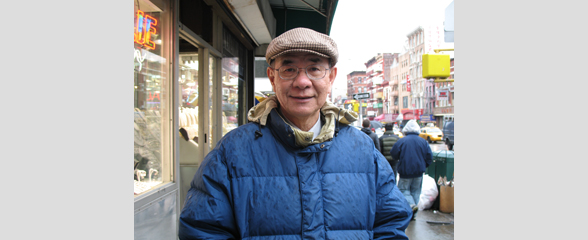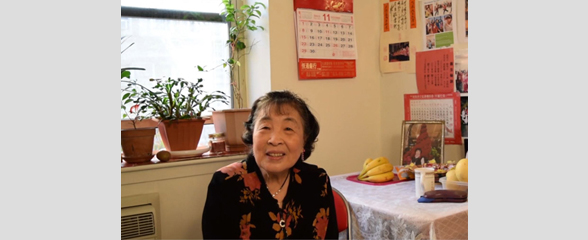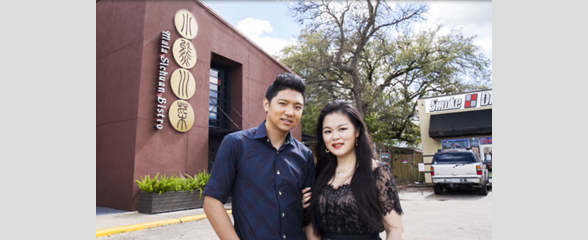Immigrants

2008.040.002 Oral History Interview with Jenny Ye February 2, 2008
Jenny Ye was born in Manhattan in 1991, and has been a resident of Chinatown her whole life. She actively volunteers and coordinates for community-oriented organizations such as Chinatown Youth Initiatives, Committee Against Anti-Asian Violence (CAAAV), Chinatown Literacy Project, and Asian Pacific American Youth Alliance (APAYA). Ye first became aware of gentrification at a Chinatown Tenant Union meeting. She visualizes Chinatown as having aged low-rise buildings, fire escapes, no elevators, and inhabited by mostly immigrant families. When asked to define gentrification, she envisions tall buildings, the process of uprooting low-income communities and shifting them elsewhere to give privilege to more affluent residents who are able to afford the renovated real estate. Ye argues that gentrification does not solve issues with safety, crime, sanitation, and poverty because it merely relocates it to another neighborhood. However, she also empathizes with landlords because her parents, who have investments in real estate, rely on gentrification and the ability to raise rent in order to sustain the family’s quality of life. Finally, Ye talks about the changes in Chinatown, claiming that it is now shrinking, and explains that the changes occurred without consideration for the neighborhood’s businesses and residents; in other words, she fears that gentrification will transform Chinatown into “South SoHoâ€.

2008.040.019 Oral History Interview with Ho Ying Pang March 16, 2008
Pang Ho Ying was born in Taishan, China, but grew up and spent a large portion of his life in Hong Kong until he moved to New York with his wife in 1988. Interestingly, his family was divided on both the East and West coasts: he and his two brothers settled in New York, while his two sisters moved to San Francisco. Pang vaguely remembers his first impression of New York upon his arrival as relatively less modern than Hong Kong, claiming that Chinatown appeared backwards since it lacked the modern buildings and technology of Hong Kong. Regardless, Pang perceived Chinatown as a friendly and supportive environment that deeply valued family relationships and friendships.
Though Pang did not plan or arrange employment in the United States before immigrating, he trusted he would find a suitable job. After two months, he found work through his younger brother as a general handyman or “gofer†at the Music Palace theater. Pang eventually became the director of the theater and managed the daily operations until he retired. In his interview, Pang walks through the history of the Music Palace and offers his opinions on what ultimately brought about the movie theater’s demise in 2000. Pang asserts that the reason the theater went out of business was because it was no longer in demand after the popularization of the relatively cheaper videotape rental. As the theater began running deficits and attendance records started dwindling, Pang recommended to the Hong Kong based theater owners that the business close its doors, bringing an end to the last movie theater that specialized in Hong Kong cinema in the United States. Pang recognizes the pragmatic reasons for closing the Music Palace but still expresses regret that the theater could no longer serve as a community gathering place for residents and visitors alike.
Pang goes on to identify some of the changes that he has witnessed in Chinatown more broadly, particularly that many old buildings had been upgraded and renovated, empty and vacant lots had gradually been built up, rent prices had skyrocketed, and the general aesthetics of the neighborhood had improved. He also hints at a generational shift and ethnic tension, comparing the new wave of Fukienese immigrants with the older generation of mainland Chinese immigrants to the neighborhood. While Pang notes that his children do not desire to return to Chinatown, he still explains that he hopes to remain living in Chinatown because of its convenient location, the Chinese food and tea, and general familiarity.

2008.040.022 Oral History Interview with Spring Wang September 8, 2008
Spring Wang is an independent developer who was born in China and raised in Taiwan. In this oral history, she discusses her experience of moving to the United States in 1968, where she attended college and became a Marxist heavily involved in political and social movements. One organization with which she associates herself is Asian Americans for Equality (AAFE), a group devoted to talking about social services, equal employment opportunities, and housing development. She reflects on her experience in New York’s Chinatown, paying particular attention to the infrastructure and ongoing development that trickles into Soho, the Lower East Side, and Tribeca.
Events like September 11th and the global economic crisis come into play when Wang analyzes the demographic shifts in the community. According to Wang, new Chinese immigrants are more self-confident and forward-looking in contrast to earlier immigrants. She believes that because Chinatown is a small area, the institutions or physical aspect of the neighborhood is more essential than the residential population to the survival of Chinatown. She proposes that Chinatown builds larger institutions, advocating for the creation of places with more cultural spirit and symbolic significance to act as a “magnet†for the people.

2008.041.010 Oral History Interview with Anna Sui
Anna Sui is an internationally acclaimed fashion designer. Her hip, exuberant, original designs take you on a creative journey and mixes vintage styles with her current cultural obsessions. Whether inspired by Victorian cowboys, Warhol superstars or Finnish textile prints, her depth of cultural knowledge is always apparent. “When I am interested in something, I want to know everything about it,†she says.
Sui shares the memory of her first trip to visit her grandparents in China, where she became interested in mixing beautiful Chinese textiles into her everyday fashion. Her parents came from Europe and settled in Dearborn Heights, Michigan, where grew up in a typical suburban environment. Her mother studied painting at the Sorbonne, and her father studied architecture. Through them, she was exposed to a very international influence of culture when she was growing up. Through natural inclination, Sui began collecting images that she liked of movie stars, dresses, interiors, and hairstyles and began organizing them into folders and envelopes. She feels that she was meant to become a fashion designer. Everything in her personality, her accumulation of thoughts and inspirations, allowed for that.
Sui recalls the inspiration and thought behind two of her collections. The collection she did as a tribute to her Aunt Juliana drew what she remembered of her aunt’s tastes in textiles and her memories of her aunt and uncle’s wedding, in which her aunt wore dazzling qipaos with matching jewelry, shoes, and bags. Her Tibetan Surfer Collection was inspired observing the mix of styles of the audience backstage at the first Tibetan Freedom concert. Regarding fashion and appropriation, Sui believes that everything is influenced by something else and is always being reinterpreted.

2016.037.012 Oral History Interview with Vivian Ku 2015/12/15
Vivian Ku, owner of the fast-casual Taiwanese restaurant Pine & Crane, talks about her journey to opening up her restaurant and the decisions she made along the way. She particularly details how her familys background and her grandmothers cooking influenced what dishes she puts on her menu and what type of restaurant she wishes to run. Her belief in the family values behind the Chinese food culture continues to drive her down the path as a restauranteur.

2016.037.012 Oral History Interview with Vivian Ku 2015/12/15
Vivian Ku, owner of the fast-casual Taiwanese restaurant Pine & Crane, talks about her journey to opening up her restaurant and the decisions she made along the way. She particularly details how her familys background and her grandmothers cooking influenced what dishes she puts on her menu and what type of restaurant she wishes to run. Her belief in the family values behind the Chinese food culture continues to drive her down the path as a restauranteur.

2016.037.016 Oral History Interview with Biying Ni 2015/12/04
Ni Biying talks about her experiences growing up in China and her experience with food over the years as she survives the Japanese invasion from an early age and moves to the US to find work during her adulthood. She imparts interesting knowledge about the regional cuisine from Fujian, China (Fujianese food) and gives insight into the types of food eaten from her rural roots in China. She describes food eaten during times of poverty as well as the difficulties she experiences while trying to make a living in New York City, ultimately settling down after being reunited with her children who moved to the US in the mid-1990s.

2016.037.028 Oral History Interview with Cori Xiong and Hen Chan
Cori Xiong and Hen Chan started the Mala Sichuan Bistro restaurant business in Houston, Texas. The two met while studying at University of Texas Austin. Xiong father was a food engineer in Sichuan, China and convinced Xiong to start her own family business. With the help of family, Xiong was able to bring authentic Sichuan flavors to the United States. All the chefs that work in her restaurants have studied at a culinary school in Sichuan. Xiong and Chan both believe that regional Chinese cuisine will continue to be popularized and accepted in America. They hope to see a future where Americans are more sensitive to authentic Chinese food.